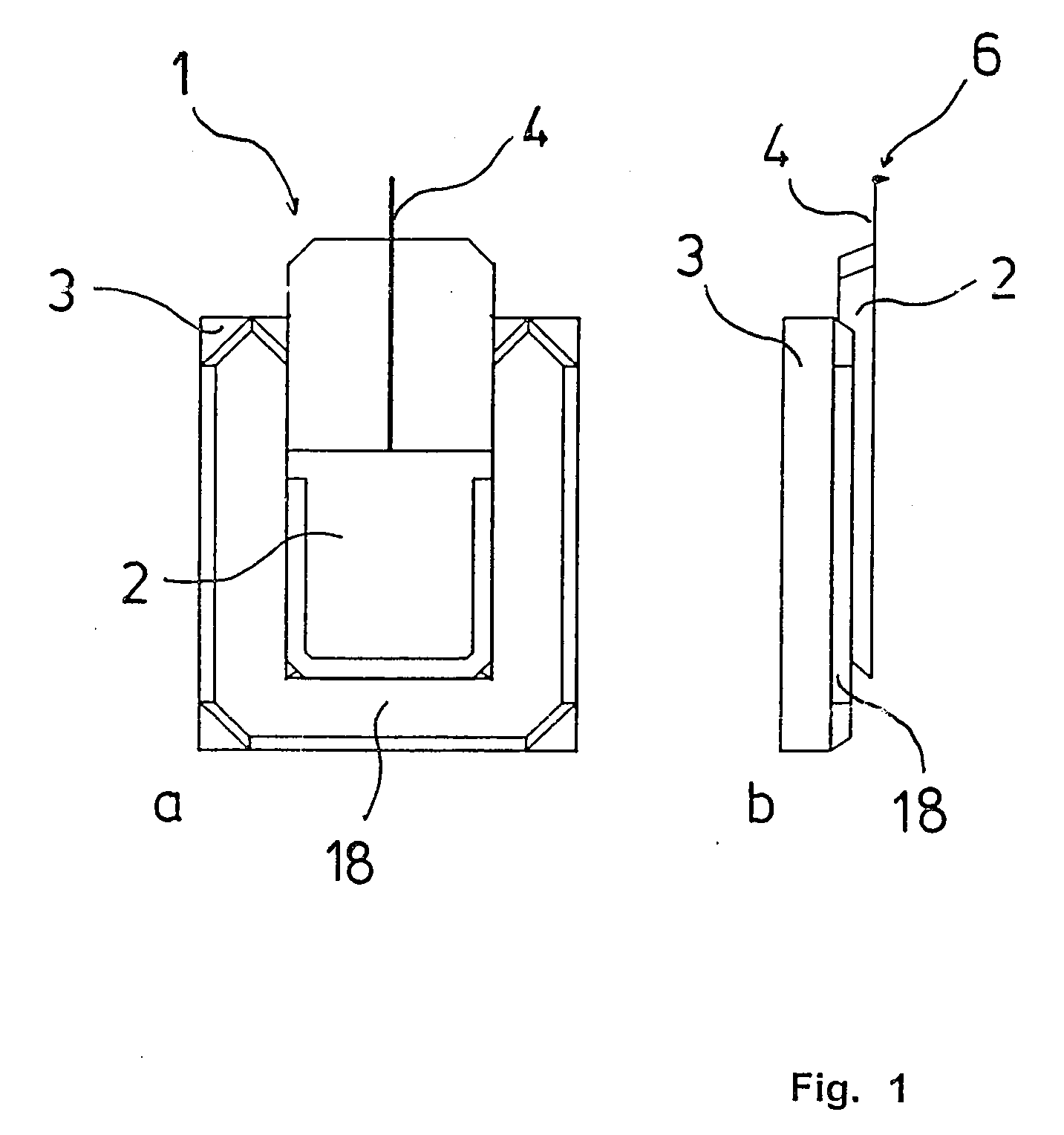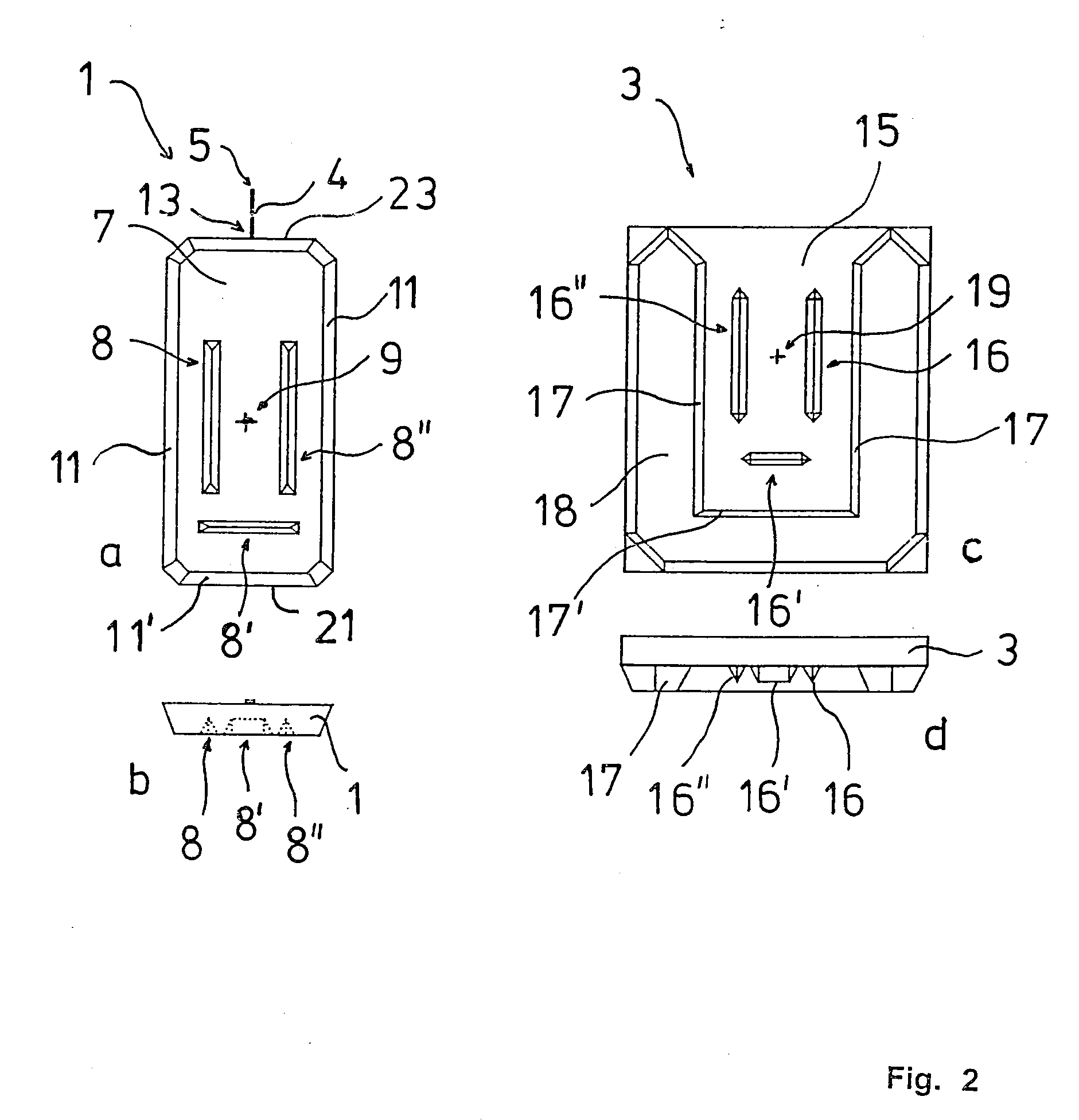Self-aligning scanning probes for a scanning probe microscope
- Summary
- Abstract
- Description
- Claims
- Application Information
AI Technical Summary
Benefits of technology
Problems solved by technology
Method used
Image
Examples
Embodiment Construction
[0031]FIG. 1 shows a scanning probe 1 in accordance with the invention whose holding element 2 is coupled with a support element 3 of a probe holder (not shown). Arranged behind the holding element 2, it has a micro cantilever beam 4 at whose one end 5 a scanning tip 6 rises perpendicular to the micro cantilever beam 4, as shown in FIG. 1a. This scanning tip 6 serves to scan a sample (not shown). The support element 3 is secured in position on the probe holder, and the scanning probe 1 is connected non-permanently to the support element 3 via the holding element 2. The support element 3 and the holding element 2 are essentially square and have recesses and raised sections serving as alignment elements 8, 8′, 8″, 16, 16′, 16″, 18, as shown in FIG. 2a to 2d, through which the support element 3 and the holding element 2 act on each other by means of positive contact.
[0032]FIGS. 2a, 2b show the scanning probe 1 without the support element 3. On the contact side 7 associated with the sup...
PUM
 Login to View More
Login to View More Abstract
Description
Claims
Application Information
 Login to View More
Login to View More - R&D
- Intellectual Property
- Life Sciences
- Materials
- Tech Scout
- Unparalleled Data Quality
- Higher Quality Content
- 60% Fewer Hallucinations
Browse by: Latest US Patents, China's latest patents, Technical Efficacy Thesaurus, Application Domain, Technology Topic, Popular Technical Reports.
© 2025 PatSnap. All rights reserved.Legal|Privacy policy|Modern Slavery Act Transparency Statement|Sitemap|About US| Contact US: help@patsnap.com



